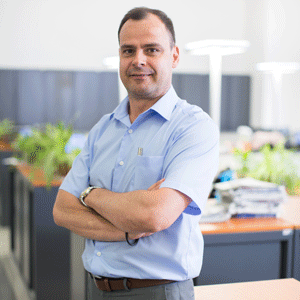THANK YOU FOR SUBSCRIBING
Editor's Pick (1 - 4 of 8)

Taking check of the reality of Digital Disruption in Maritime industry
Jeevarathinam Ravikumar, VP Technology & Innovation, Lloyd’s Register


Jeevarathinam Ravikumar, VP Technology & Innovation, Lloyd’s Register
In addition to day-to-day operations, upgrade, refurbishment, and maintenance projects will involve hundreds of workers who must be thoroughly trained—especially in safety-related operations such as handling fires, toxic chemicals, high-pressure leaks, and other emergency incidents.
Virtual Reality can be used to train the personnel in a simulated potentially hazardous environment when safe training onsite is almost impossible. Trained personnel are exposed to the virtually real environment in an immersed way and trained to have the confidence to carry out the work in the real environment. In a virtual environment, a person has the flexibility to make multiple mistakes with the simulated impact, so they can safely navigate through hazardous environments and tasks.
In terms of shipbuilding, VR can also be used to literally eliminate all design flaws. This is feasible because one can simulate the real build during the design stage and reality technology can allow us to visualise how a change in the design may affect the final build. All stakeholders from designers to validators to surveyors to maintenance technicians can collaboratively realise not only the final build but also all the components involved, ocean environment, impact on maintenance, and many more. In summary, one can go through the complete lifecycle of a ship even before it is built.
Turning to augmented reality, full mobile reality, and UHD video quality will be realised with the deployment of 5G, which offers seamless gigabit communication with the latency of less than 1 ms. This will speed up the remote maintenance applications with augmented reality through which a maintenance personnel can not only visualise, for example, the inside of an engine depicting all the components but also collaborate with the engineer on shore to get the expert advice.
These developments will make the remote maintenance and inspection more efficient, cost effective, timely, and above all safer. Reality applications are proven to be the best 3D virtual guide for maintenance and inspection personnel offshore.
Safety is the top priority for Lloyd’s Register and LR launched a VR safety simulator few years back to help illustrate the need for a continued focus on safety and risk assessments in the industry. LR continues to innovate in the areas of remote inspection and predictive maintenance to better understand how digital technologies combined with AR/VR, AI, machine learning, deep learning, data analytics, blockchain, and visualisation can improve safety within the maritime industry.
Weekly Brief
I agree We use cookies on this website to enhance your user experience. By clicking any link on this page you are giving your consent for us to set cookies. More info
Read Also













